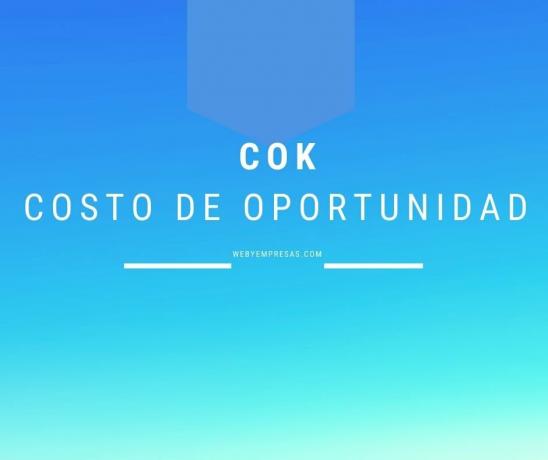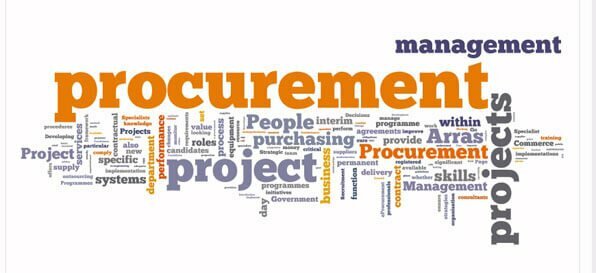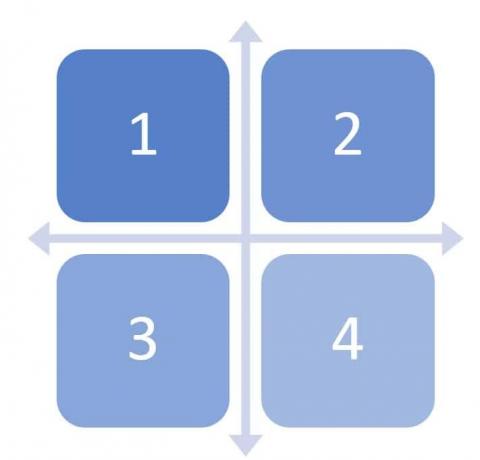The opportunity cost of capital (COK) It is the one that those interested in investing in a project or company require as the minimum profitability for their participation. This is based on the profitability and similar risk of other investment options.
Opportunity cost capital it is also known as "Discount Rate" or "Minimum Rate of Return or Interest". In other words, it is the cost you have for not investing your money in the opportunity that is presented to you. currently, or the interest you would have earned had you invested in the best option or business alternative.
Advertisements
Generally, the minimum rate of return is used in decision-making processes. It is therefore important that you keep in mind that, to calculate or determine the discount rate, you take into consideration the percentage of risk and the number of opportunities you have to invest a capital.
In this article you will find:
What is the opportunity cost?

Advertisements
Refers to the rate of returnminimum investment, with which the company can generate value. In other words, it is the return expected from the best investment option or alternative with equal risk.
The expected return is that return that, using some technique or method, is estimated to be obtained in the future with respect to a financial asset. It is not an indicator of profitability and is useful to evaluate your own contribution.
Advertisements
The COK it measures the expected long-term performance so it is based on possibilities or projections. For this reason, it cannot be assumed that the expected dividend is necessarily the exact return that will be obtained. However, a projection of the average return in subsequent periods can be made that is similar to the expected return.
Importance of opportunity cost of capital

Advertisements
As already mentioned, the COK It should be understood as the rate of return on the minimum investment that supports a company to generate value from it. Then, its importance is based on the fact that it is the opportunity cost of capital or discount rate, which allows the decision-making of every company.
The opportunity cost of capital then is the first step that must be taken to increase the corporate value of a company. Therefore, it is vital when evaluating the investment of financial resources. That is, whenever you have to make an economic decision that involves "choosing" and "giving up" a benefit when you opt for other options or alternatives.
Advertisements
The COK is frequently used in both the accounting and economic areas. It is very valuable, it should be possible to make a list with alternatives and calculate the expected results in each of them.
The rejection of the different options determines the birth of the opportunity cost of capital. This cost is a long-term concept that basically depends on two unknowns: the expected return and the comparable risk.
Factors to consider when using the COK
Although it is not possible to know exactly what the real capital opportunity cost will be for a decision made, due to the inability to forecast the future with exact precision, there are some factors that you should consider when using the COK for your investment. Among them, you should keep in mind, the following:
- It is the cost of investing in a project or an asset that serves as the basis for decision-making in companies.
- It is the percentage of return of the loss when rejecting a project and accepting another.
- Measures long-term performance based on expectations or projections.
- Not necessarily the performance that is expected is the one that is actually obtained.
- It is the rate of return on investment.
- It is implicitly associated with the concept of risk, so you must use one that is equivalent to the expected return.
- Inflation it also influences and alters the expected actual performance.
- Finally, the best way to calculate the opportunity cost of capital is by comparing what you will get for the investment with two different projects.
Opportunity cost utility
In economics, the opportunity cost and any preconceived or anticipated utility in choosing one alternative over another generates a utility. In simple terms, this is the satisfaction that a person receives as a product of their economic activity.
In order to measure profit, it is necessary to assume the following in the financial world:
- That all other options or alternatives are equal or remain constant, that is, under equal conditions.
- It is necessary that there are at least two goods in the chosen economic model. Most of the time, there are many more than two.
- Reasoning logically allows the consumer to broaden the selection if there are at least three alternatives.
- It is also essential to be exhaustive when you review any list of goods or alternatives, and be able to choose the option between that list and make a ranking because transitivity is assumed.
- If the list of options is normal, when income or profit increases, the consumer will demand more of it because it will always prefer a greater quantity of goods than a smaller quantity from them.
Conclusions
One of the most complex areas for making financial decisions in a company is its capital structure, which is based on the opportunity cost of capital that has been invested.
Keep in mind that to achieve the goal of the company and maximize the investment of the owners, you have to be able to assess capital structure and understand its relationship with risk, return and value.
The COK is a benefit or the value of something that you have to discard or give up, with the aim of acquiring something else or something else. Because any resource (land, money, time, among others) can have an alternative use, each action, choice or selection, or decision has an associated opportunity cost of capital.


